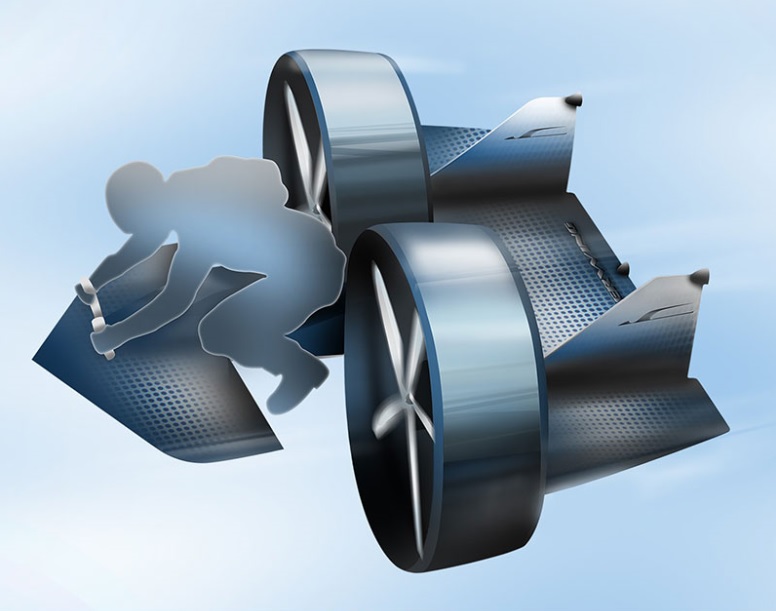A personal flying device, how cool is that? A team of TU Delft students won $20,000 with their design of a flying motorcycle. “Awesome,” says team captain Victor Sonneveld.
The 'flying motorcycle' of the TU Delft Silverwing team. (Illustration: Go Fly)
Silverwing, a team of TU Delft students, is one out of ten teams that won $20,000 in a Boeing-sponsored international competition to build a fully functional flying device or jetpack. Almost 3,000 participants from 95 countries took part in this competition to win the GoFly Prize. Competitors had to design a flying device that can carry one person twenty miles without refuelling or recharging and with vertical, or near vertical, take-off and landing capability.
The team’s winning device is what team captain Victor Sonneveld calls ‘a kind of flying motorcycle’. It is powered by two electric motors with ducted rotors. The aircraft makes a 90 degree transition from vertical takeoff to horizontal cruise flight. “The device is being propelled by two large electric propellers,” Sonneveld explained. “These are ducted, not only for safety but also to reduce noise and to increase the thrust during takeoff and landing. They are also used to generate lift in horizontal flight.”
The operator is placed in a motorcycle position. “This position is familiar to people, so we hope this will help to reduce anxiety in flying this way,” Sonneveld continued. “The operators will have a kind of seat which prevents them from falling backwards. The person is constrained to the vehicle, because you don’t want him to hit the propellers behind him.”
The competition consists of three phases. In phase I, teams had to submit a written report summarizing the project. Submissions were scored in categories like:
- Technical content and feasibility,
- Novel innovation and market considerations,
- Safety considerations,
- Project execution feasibility and, finally,
- Organisation, clarity, and succinctness.
Silverwing won this first phase. With the money the team will build test set-ups and maybe scale models for the next phase. In that second phase, teams can win $50,000 with their revised report and demonstrated progress to date. The final phase is a fly-off, in which a grand prize of $1 million is awarded for the best overall score for tech inspection and flight demonstration. The scored parameters will be size, noise, and speed.
For the flight demonstration, the device must successfully complete a single flight profile with the following tasks:
- Takeoff and climb without violating a takeoff and landing envelope of a 30 foot diameter cylinder with virtual walls 12 feet high.
- Demonstrate the capability to abort a landing without violating this envelope.
- Conduct a speed run of six laps around a one nautical mile course.
- Demonstrate that the total flight endurance is greater than twenty minutes, descend and land without violating the takeoff and landing envelope.
Teams can also win $250,000 for the quietest and for the smallest device, and $100,000 for making a disruptive advancement to the state of the art.
Do you have a question or comment about this article?
c.j.c.vanuffelen@tudelft.nl


Comments are closed.